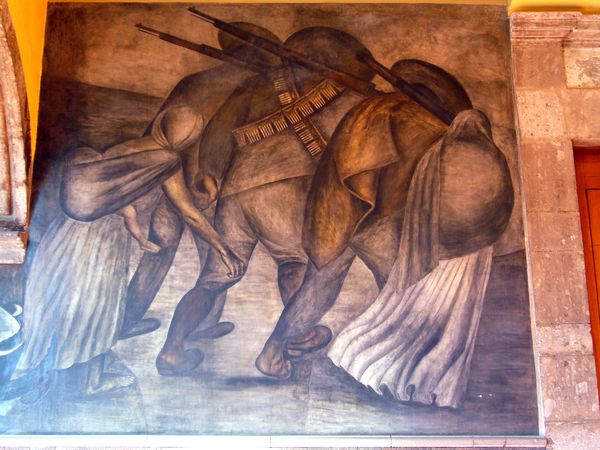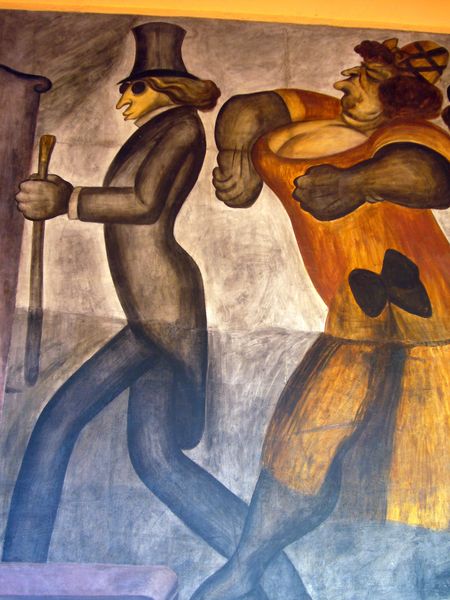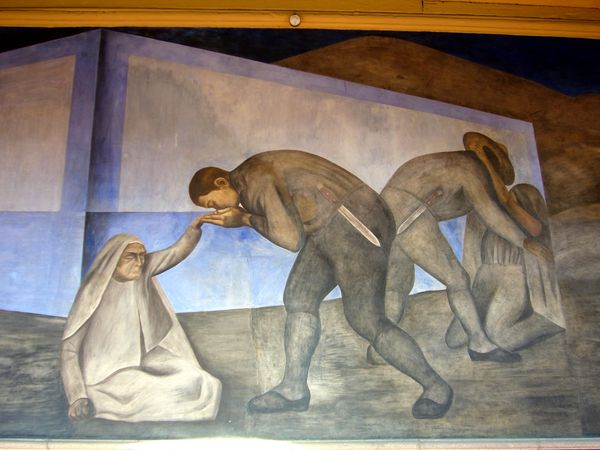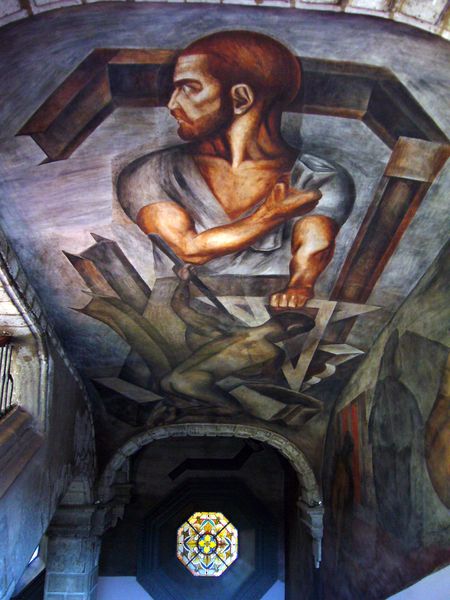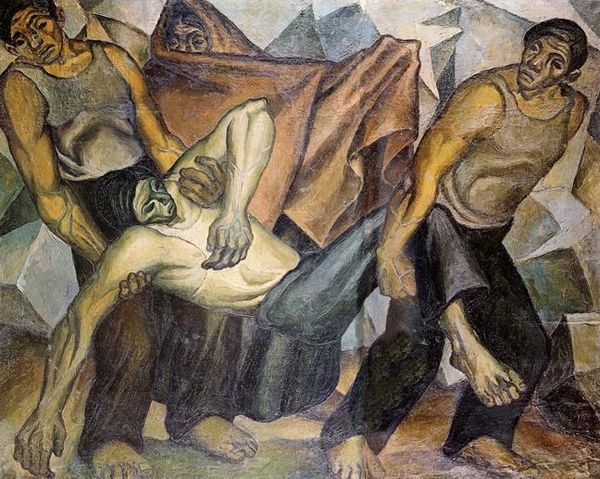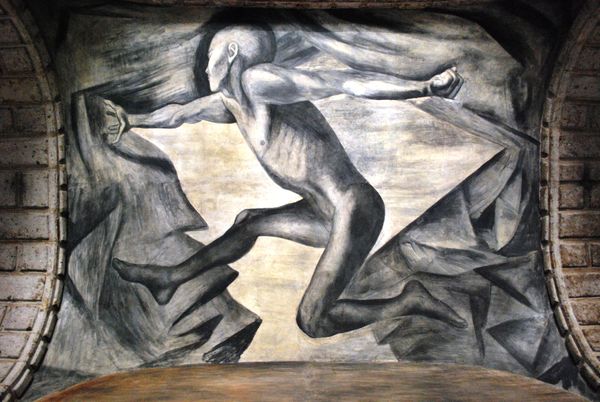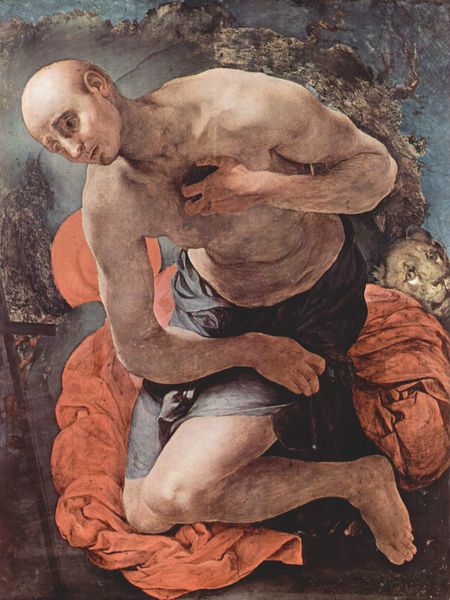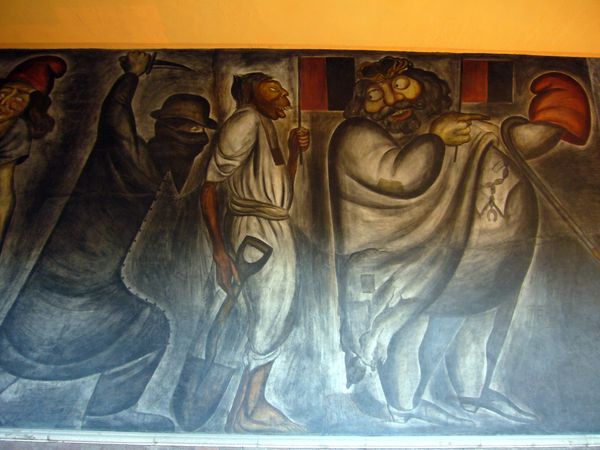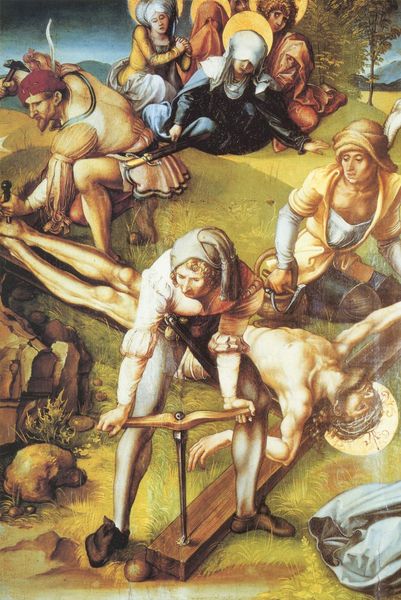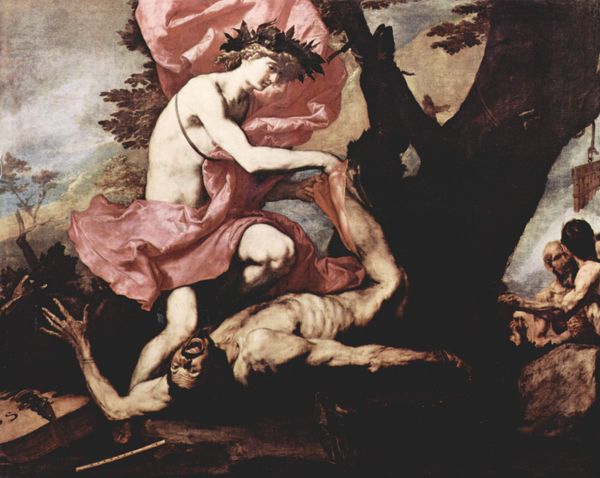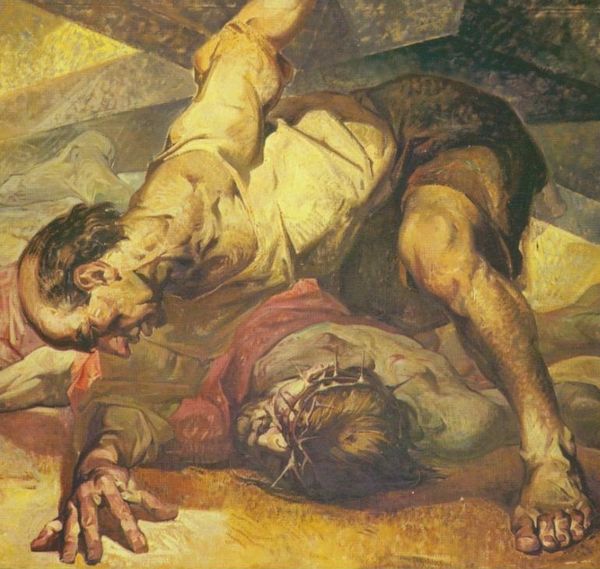
fresco, mural
#
portrait
#
narrative-art
#
figuration
#
fresco
#
line
#
mexican-muralism
#
genre-painting
#
history-painting
#
mural
#
modernism
Copyright: Public domain
Curator: Here we see "The Franciscans," a 1926 fresco by José Clemente Orozco, part of the astonishing collection of murals in Guadalajara. What strikes you first? Editor: The sheer physical strain depicted is palpable. The raw physicality, the weight… it’s all in those strained muscles. The ochre tones add a kind of dustiness; I can almost feel the coarse texture of the monk's robe. Curator: Yes, Orozco was deeply engaged with the social struggles in post-revolutionary Mexico. Notice how the Franciscan monk, usually a symbol of spiritual comfort, is rendered here as burdened, almost collapsing under the weight of… what? Editor: That’s what gets me. It isn’t just piety weighing him down. It's the historical role, the material implications of power dynamics and the physical labor required to maintain the church's influence during that era. Curator: The slumped posture speaks to a loss of innocence, perhaps the crushing realization of the Church's complicity in social injustice. Observe the indigenous figure beneath him; it feels almost like a pieta, but inverted. Editor: That inverted Pieta... It hits hard. Orozco's use of fresco – that direct engagement with the wall, the building itself – emphasizes the inseparability of these ideas from the physical structures of power. We need to remember who built the wall and why it endures, don't we? Curator: And the figures emerging from the darkness to the sides suggest further unnamed suffering. Orozco is not offering simple answers, only brutal truths. He doesn't flinch from difficult realities. Editor: Exactly. This isn’t some sanitized religious image. This is sweat and labor and power relationships made stark. I’m left considering not the message of spirituality here, but the real economic and physical consequences the Church was having during that time in Mexico. Curator: Indeed, a work to challenge us, not to comfort. A forceful meditation on burden, legacy and historical toll, rendered in unforgiving pigment. Editor: Ultimately, "The Franciscans" doesn’t just depict a historical scene but makes us confront our own role in perpetuating or challenging systems of power and privilege today. Food for thought.
Comments
No comments
Be the first to comment and join the conversation on the ultimate creative platform.
